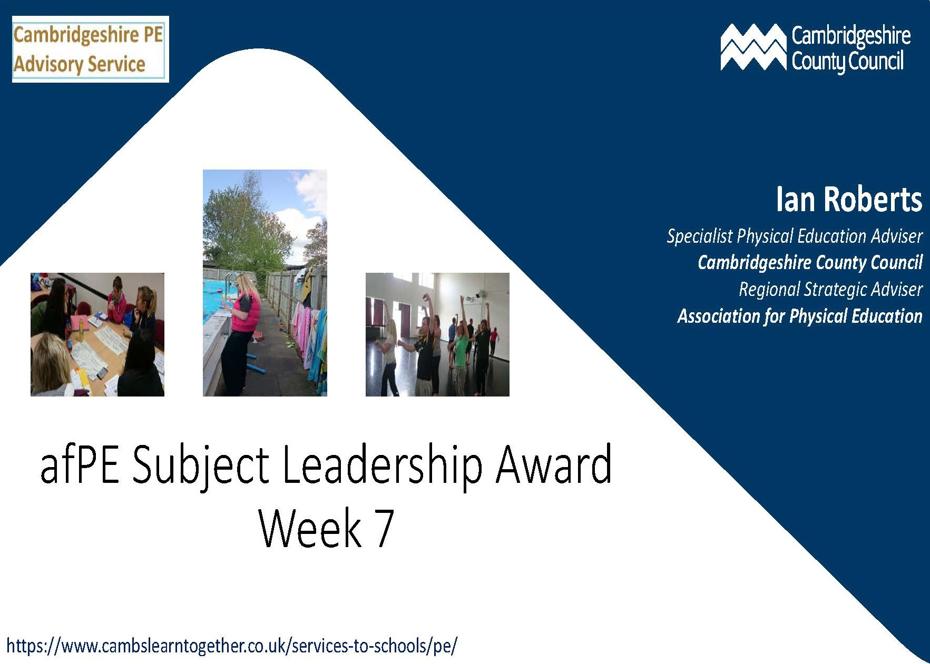
What Ofsted expects of PE ….
.... What PE can expect from Ofsted
- Headline messages
- Sharing your vision
- Myth-Busting
- The curriculum map & the hierarchy of learning
- The PE & School Premium – are you website compliant?
- Diving deep!

Ofsted - Looking forward
The greater emphasis the new framework places on the quality of education and personal development is something that PE, school sport and physical activity can significantly help to deliver against. PE, school sport and physical activity can be recognised for playing an essential role in a broad and balanced education - enhancing children’s health, building character, improving wellbeing and supporting them to realise their potential. At a time when young people’s health and wellbeing has been in decline, this could not be more important.
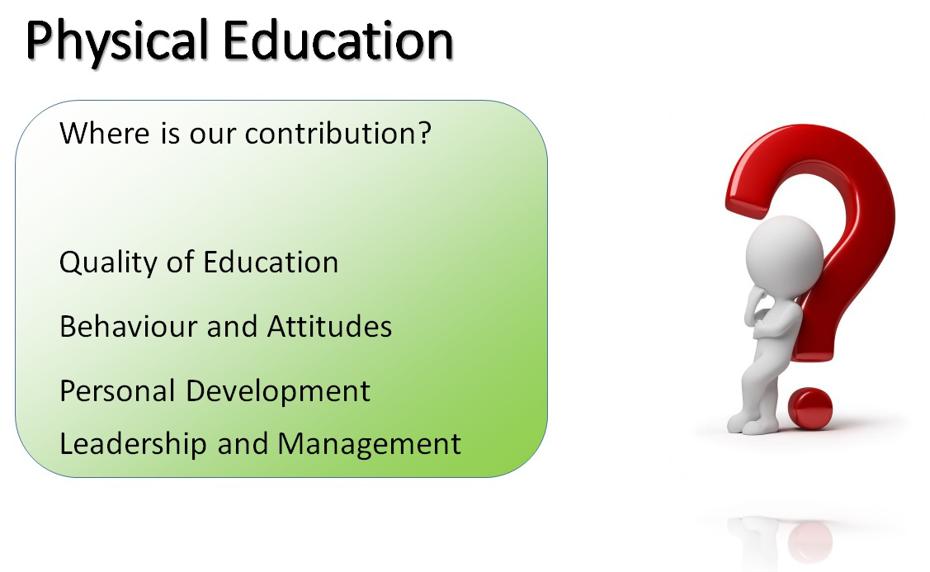
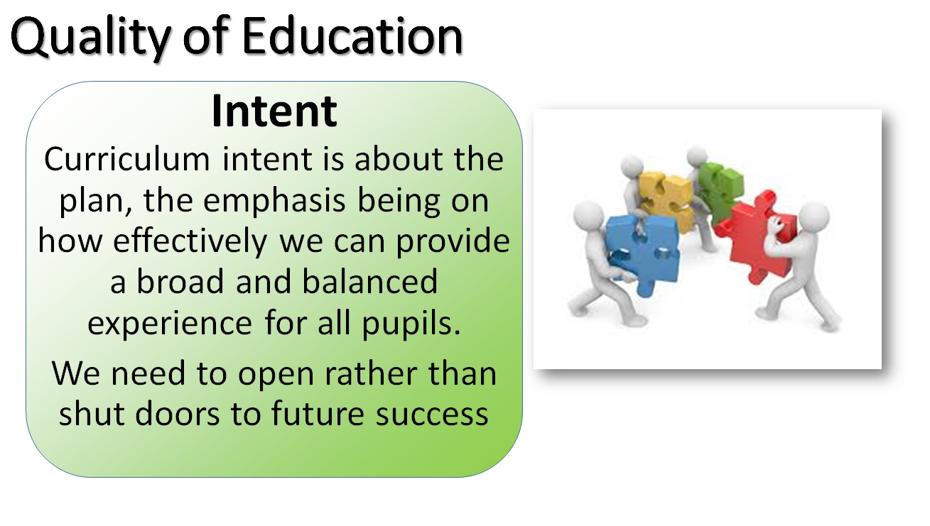
Why do we do it the way we do?
- Your educational philosophy – an informed opinion on the purpose of Physical Education in your school.
- What is its 'unique selling point' to parents and prospective staff?
- What you want pupils to have achieved and experienced by the time they leave (in top-level detail)
- The overarching principles and aims of your curriculum
- What's essential for pupils to succeed?
Reflective TaskPhysical education, school sport and physical activity (PESSPA)What is Physical Education? What is School Sport? What is Physical Activity? Compare and contrast the PESSPA terms. Discuss their meaning giving examples of each in practice Develop a Venn diagram to illustrate similarities and differences of the terms. Demonstrate your understanding by listing examples in each of the sections created by the overlapping circles |


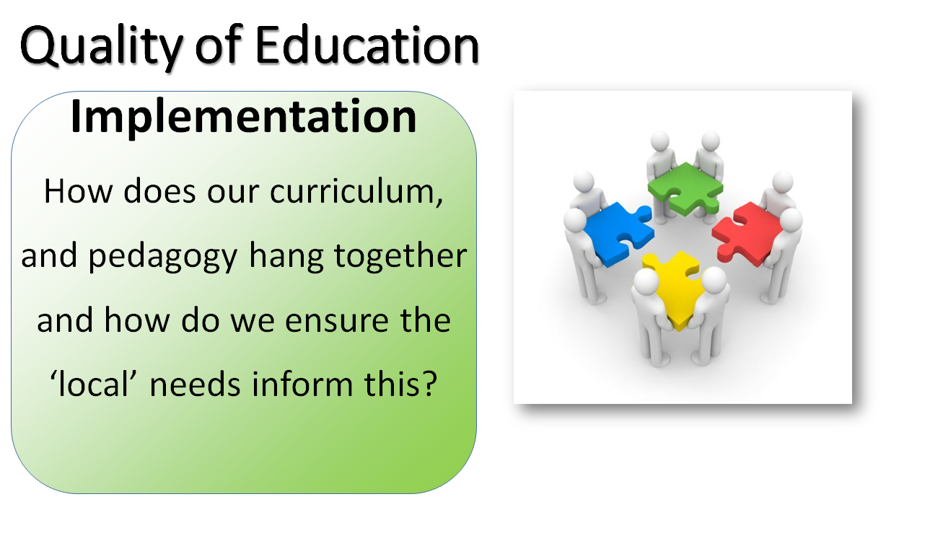
Reflective ActivityQuestions:
Actions:
|
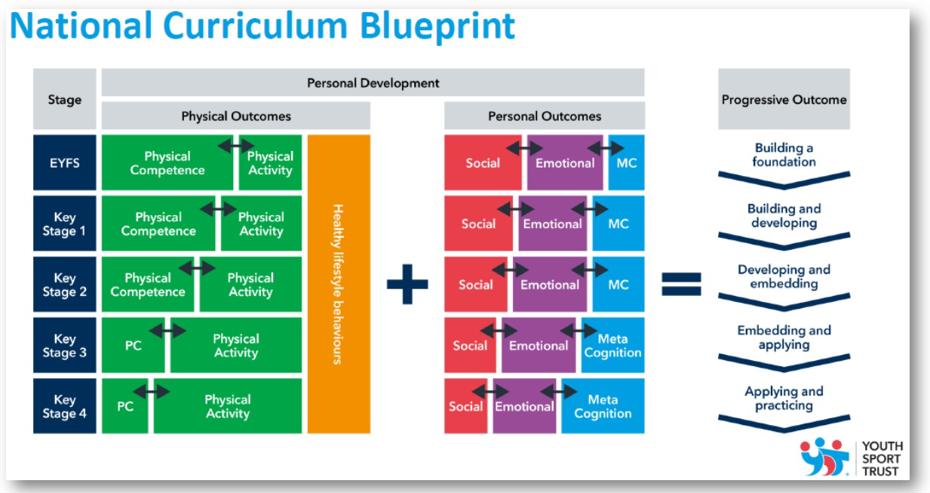
The PE & School Sport Premium

Are your priorities aligned with the 5 Key indicators?
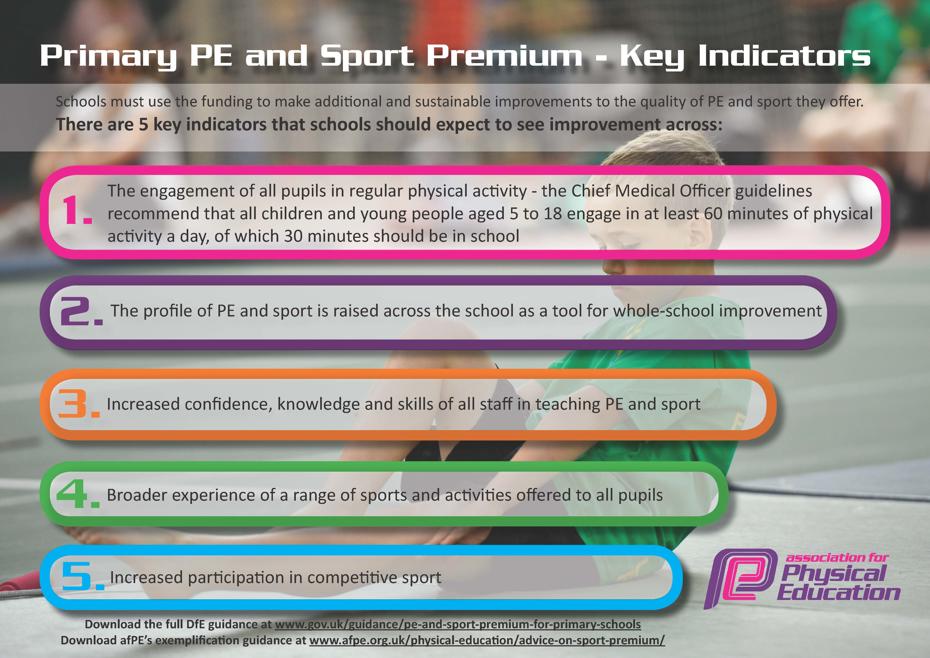
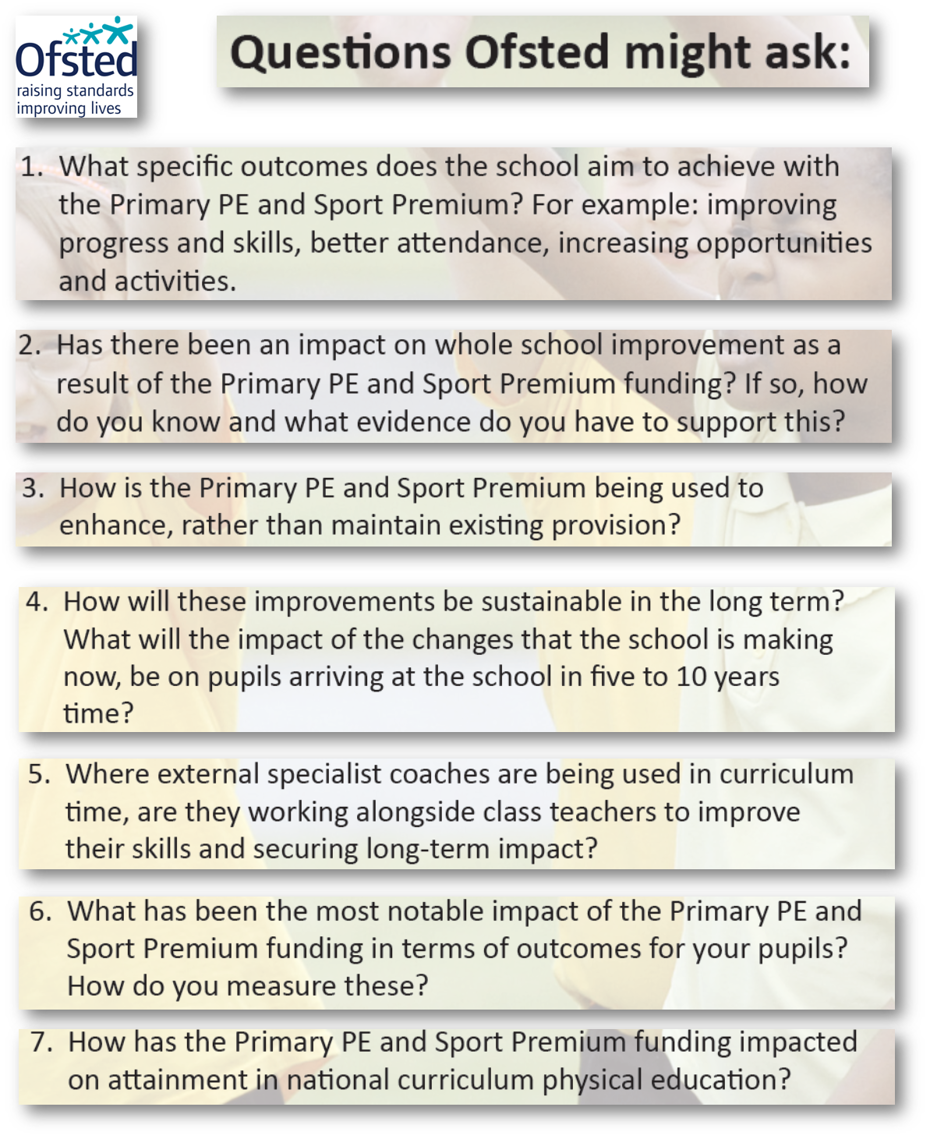
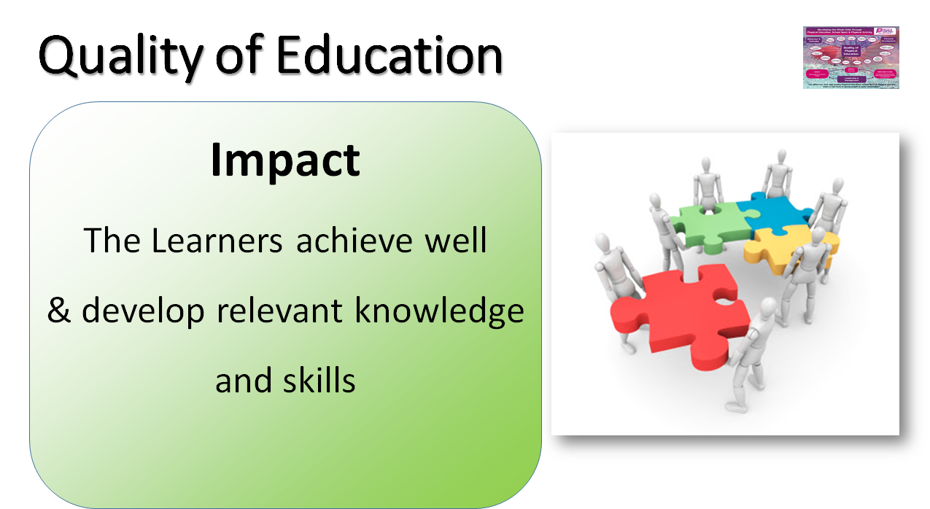
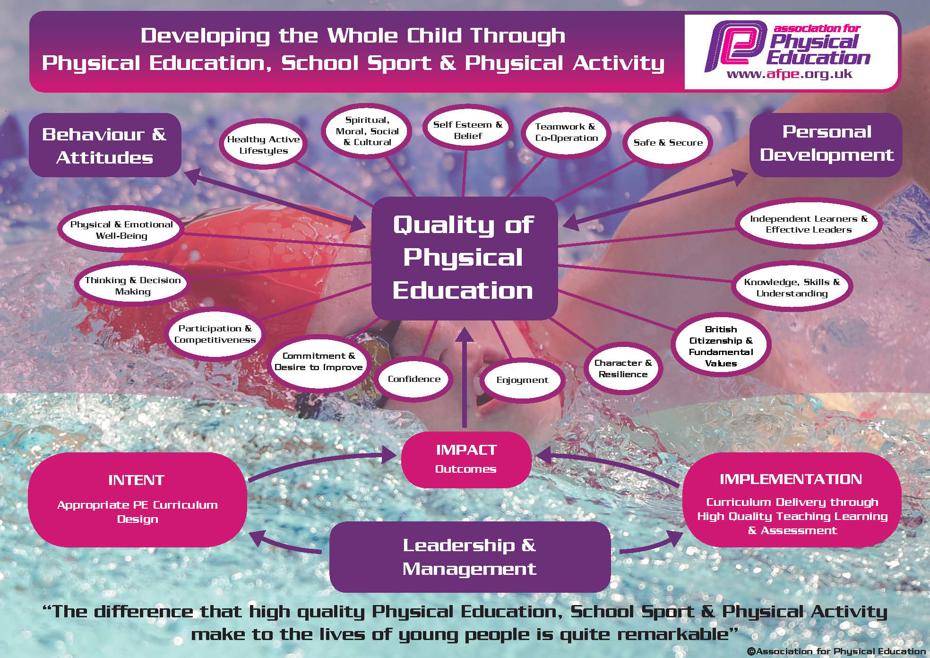

Designing a targeted strategy
CHANGE MANAGEMENT PRINCIPLES UNDERPINNING THE PROCESS
The following change management principles have been synthesised from change management research.
- CHANGE MANAGEMENT PRINCIPLE: COMMUNICATION
In communicating change there is always a person or persons providing information about the change and a person or persons who receive information about the change. In a school setting given the subject context, the two providers of information that teachers will receive information from should be the headteacher and the person responsible for leading and managing change, in this case a subject coordinator/the candidate. Change management research tells us that ‘receivers’ or ‘employees’ are more likely to support and engage with the change process if it is seen as valued by the organisation leader (headteacher) and comprehensible to whole school practice.
- CHANGE MANAGEMENT PRINCIPLE: RESPONSE TO CHANGE
There are three broad categories of response to change (Frapwell 2002):
i.Bandwagon jumpers: Some people in organisations will always be supportive and embrace change. They trust and follow the ‘change-makers’.
ii.Rational adopters: These people typically respond to change by asking considered questions about the rationale for change, the purpose of any change intended, the processes involved, implications for workload and so on. They are supportive yet need to rationalise and understand the process. Often leaders view this response as challenging, but it is a vital response as it requires the ‘change-maker’ to critically reflect on their actions. It can also lead to consideration to adapt, add or withdraw intended actions.
iii.Stone age obstructionists: People in this category ‘appear’ to resist change and can be vociferous in refusing to engage. This could be due to the uncertainty of success and fear of the unknown and these physical behaviours and emotional reactions can create strong resistance to change. In this context it is more likely to be that the proposed change will impact on the teacher’s own value system e.g. the way they teach PE. It may also be due to negative teacher attitudes to PE which have evolved from the teacher’s dislike of the subject since they were a pupil at school.
Resistance to change is a normal and natural reaction, so it should be expected and planned for as part of leading and managing the change process.
- CHANGE MANAGEMENT PRINCIPLE: KNOWLEDGE IS POWER
i.“Ipsa scientia potestas est“. This phrase is attributed to Francis Bacon (1597). Essentially it refers to the fact that no work can be done without knowledge. Knowledge is a powerful factor that empowers people and can lead to successful results.
ii.Knowledge of sufficient funding and resources available for the change; knowledge of how PE and Sport Premium might be effectively used in addition to central PE funding; knowledge of links with school priorities; knowledge of key stakeholders and the importance of value systems in relation to headteacher support; and knowledge of responses to change all demonstrate accountability for the change process – a willingness to accept responsibility and make change happen.
- CHANGE MANAGEMENT PRINCIPLE: THE SIZE OF THE GAP
i. How big is the gap between current practice and proposed practice? What is the departure from our current practice to our future practice? Change management theory will often contrast incremental change versus transformational change in relation to these questions. Small steps versus giant leaps.
ii.Candidates should be aware of the implications of the ‘gap’ proposed for different people within the school. This is different to simply proposing a solution and then designing and implementing strategic action to provide the solution (one size fits all). In this way it becomes a consideration of how disruptive the proposed change is for individuals, the size of the gap it creates for them and the implications for how we might support the individuals involved in the change process. Simply implementing the ‘right’ answer is not enough as this can lead to a disconnect between the change-maker and the individuals concerned.
- CHANGE MANAGEMENT PRINCIPLE: FIND JOY IN THE JOURNEY
i.Change occurs as a process, not as an event. Change in a teacher and ultimately the learner will not happen just because we have presented the changes to them or because we have sent an email outlining the changes. Change will happen overtime.
ii.Focus targeted strategy considering where individuals are in the change process. No one experiences the process the same.
iii.The journey is mapped by ongoing strategy related to achieving impact (input, activities, output, outcomes, impact).
- CHANGE MANAGEMENT PRINCIPLE: SUSTAINABILITY
The Oxford English Dictionary (2017) defines 'sustainable' as: Able to be maintained at a certain rate or level. In Education the word has become synonymous with institutionalising system change. When observed in this way, it doesn't just refer to the continuation of a project, programme or approach, it refers to the development of relationships, practices and procedures that become an enduring part of the community or culture of practice .
The concept of sustainability can be illustrated through approaches to teacher professional development. Consider attendance at courses:
a.Enrolling on a dance course to gain ideas for teaching
Research from the Teacher Training Agency (TTA) in the 2000’s indicated that 5 weeks after attending a course a teacher’s practice was the same as their practice before attending the course.
b.Enrolling on a dance course to learn about principles for composing dance
This type of professional learning empowers teachers and supports the development of sustainable practice rather than attending a dance course year on year to get more ideas. Allocating monies for teacher CPD overtime that focuses on principles that can be applied (such as the SLUK L5/6) is an effective use of PE funding, including PE and Sport Premium.
Achieving sustainability can be viewed as a continuum: Using AfL actions as an example:
i.Focusing – Teachers develop learning intentions/objectives aligned to standards expected - some/most/all pupils are aware of learning intentions/objectives
ii.Developing – Teachers develop clear success criteria and share with pupils on whiteboard
- some/most/all pupils are aware of success criteria and what they are expected to learn
iii.Embedding/Establishing – Teachers can explain success criteria and use other media to share e.g. images/videos etc.
-some/most/all pupils have a clear understanding of what they are trying to learn (and value success criteria)
iv.Enhancing (sustainable practice) - Teachers promote peer and self-assessment using clear success criteria overtime – some/most/all pupils routinely determine and use their own success criteria to improve themselves and others.
The enhancing practice illustrated above has reached a point where overtime the AfL practice has become ‘the way’ of doing things for both teachers and pupils. Pupil practice begins to improve their own and others learning and performance.
The practice is sustainable in that it does not need further monies allocated for teachers to attend courses re AfL and success criteria. The practice has developed sufficiently so that teachers can be self-sufficient. They can develop their own AfL practice through critical self-reflection and new staff can be mentored by practioner’s whose practice is enhancing.
Reflective ActivityDiscuss a strategy to evidence the contribution PE makes to pupils' personal development in your school. How you will collate any evidence? Probably the best way to find out about PE in a school is to talk to the children and young people. This can be done formally or informally, however when trying to build a picture of what PE is really like, and what the areas of strength and weakness are some formal opportunities to talk to both pupils and other stakeholders, for example; parents, Higher Learning Teaching Assistant's (HLTAs) and coaches are important.
|
Reflective ActivityDiscuss:
• Identify six questions and the information that you might gain from these questions |
The cycle of improvement
The primary leadership role of Primary School PE subject leaders is to raise and maintain standards in the subject. This is often presented as a cyclical process in response to the questions:
How well are we doing and how do we compare with similar schools? Improvement planning begins with an audit designed to establish secure judgements about standards of pupils' achievement, the current quality of teaching and the appropriateness of the curriculum.
What more should we aim to achieve this year and what must we do to make it happen? Improvement targets are established against the audit and strategies developed to achieve the targets set.
Taking action and checking that it happens. The improvement strategy is put into action and progress is monitored. Judgements about standards are made to identify whether they have been raised

